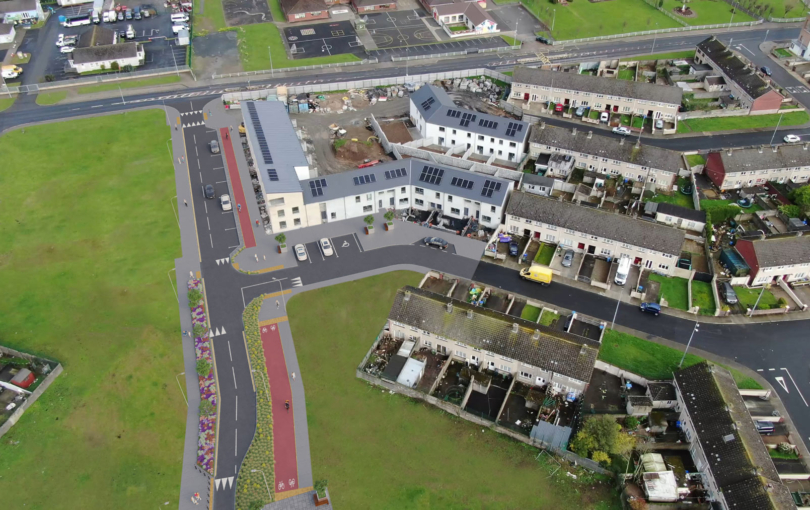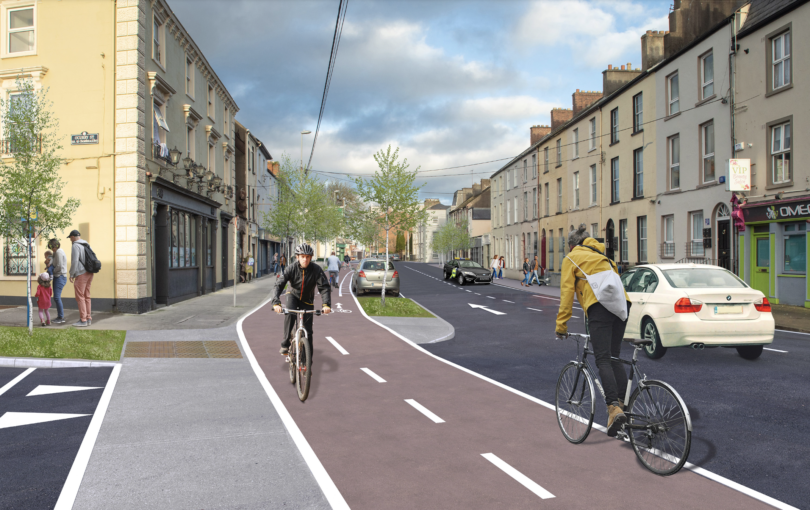Prior to the local elections in May 2019, Limerick Cycling Campaign asked local election candidates to pledge their support for the development of a connected cycle network for Limerick. Limerick Cycling Campaign believes that progressing cycling in Limerick requires a solid relationship between the advocates on the ground, the Council executive developing the projects and the councillors making the final decisions.

Currently, Limerick City and County Council is working through the Active Travel Team (a growing team of 20+ staff with a range of expertise) to progress a number of active travel projects throughout the city. However, there is growing concern that some of these projects will be significantly delayed and diluted from the original proposal to projects that in reality will not deliver the additional safety infrastructure that makes cycling a viable mode of transport for 8-80-year-olds.
Some of these projects have become contentious in recent months and we have seen a three week filtered permeability trial reversed due to negative public opinion. We have heard a call for a cycle lane that has been delivered to be removed due to perceived driver delays. We have seen small developments facilitating the Safe Routes to School Programme rejected and design changed. Positive and meaningful engagement with members of the public is an issue that needs to be addressed.
However we do know that a number of our sitting councillors have given these projects considerable thought and continue to do so. However in early 2019, some councillors went a step beyond and pledged their support to the development of a cycle network across the city.
These councillors are Daniel Butler, Joe Leddin, Sean Hartigan, Michael Sheahan, James Collins, Abdul Kalam Azad Talukder, Kieran O’Hanlon, Joe Pond, Elena Secas, Catherine Slattery, Conor Sheehan and Olivia O’Sullivan.
We, therefore, call on our 12 allies above and the further 9 councillors within the metropolitan area, to continue supporting the delivery of safe connected cycling infrastructure within the city and metro area and vote to maintain proposals designed by those with specific knowledge and expertise within the Active Travel Team.
In the case of the South Circular Road project, the ATT has incorporated significant amendments following the public engagement process, retaining significant parking space and modifying parts of the route that directly impacted residents/businesses.
However, the project is now with the metro councillors and is vulnerable to being amended further.
Recent media reports indicate that some councillors, including those referenced above, are unfortunately considering the removal of cycle segregation and filtered permeability, returning the route to what it is already – a shared space. Shared spaces do not work for the majority of cyclists, especially children. Therefore creating a shared space for cyclists on the SCR will not deliver the planned modal shift to cycling and consequently is a complete waste of tax-payers money and local authority resources.

 Another amendment proposes the removal of the filtered permeability and most of the cycle lane, replaced by a filtered light. Again traffic lights do nothing to create safety for people using non-vehicular transport and in many countries are being removed due to the stop-start behaviour between traffic lights, where motorists speed for short distances and try to shoot red signals.
Another amendment proposes the removal of the filtered permeability and most of the cycle lane, replaced by a filtered light. Again traffic lights do nothing to create safety for people using non-vehicular transport and in many countries are being removed due to the stop-start behaviour between traffic lights, where motorists speed for short distances and try to shoot red signals.
These amendments completely remove the safety features currently designed into the existing proposal and if passed by vote on Monday are likely not to be funded by the NTA as the objectives of the project will not be met, i.e. it becomes a waste of tax-payers money. However, the clearest indication has been given by the Minister for Transport, who only this week outlined that the funding will go to a more progressive city, if Limerick votes against the current project.
The Limerick Cycling Campaign, therefore, calls on our local decision-makers to support the current proposal as put forward by the Active Travel Team and progress this key route for the city without any further delays or dilution.


Questions originally ask of councillors. —————————————————————————————-
The Limerick Cycling Campaign believes that to make utility cycling an integral part of Limerick’s transport network, we need a safe, connected and coherent cycling network to travel on. Limerick currently has a low number of poor-quality disconnected cycle lanes dotted around different parts of the outer city. By continuing to develop cycle lanes in a piecemeal fashion we are not encouraging the growth of cycling as an integral part of the transport offering in Limerick. In order to encourage people to use bikes as an attractive and feasible alternative, we need a connected, coherent and safe cycling network to travel on. This network needs to be properly integrated, segregated from motorised traffic and permeable in terms of where it can take people on bikes.
The Limerick Shannon Metropolitan Area Transport Strategy (LSMATS) was delivered following intensive engagement with stakeholders across the city from public reps, to the business community to active travel advocates and members of the public. This work spans a period of two years, where in effect Limerick fought for a progressive and dynamic strategy that takes us from a low-quality network in 2022 to a high-quality connected cycle network over the coming years. It was not an easy process, however, it was very worthwhile in terms of setting out our transport priorities taking us to 2040. Having such a plan in place creates a firm foundation on which to design and construct such a cycle network and some of these projects are at the crucial stage of early development right now. Sustainability will be key to transport in Limerick going forward and having a safe and coherent cycling network in place should be a vital part of this. Without a cycle network implementation plan in place, this will be very difficult to achieve.
Numerous cities have implemented a policy of building segregated cycle lanes and this has had a hugely positive impact on traffic congestion. Ghent a city in Belgium with a similar population and climate to Limerick has recently increased the number of people accessing the city by bike by 25%, this happened just one year after introducing a new traffic plan to encourage cycling and improve the environment in the historic city core. In the Netherlands, they are implementing Cycle Highways – direct, coherent and permeable cycle lanes from the suburbs to city centres. The result of the creation of this cycling infrastructure is relief for heavily trafficked areas and thousands of hours in car journeys are saved every day. Ireland’s own national policy guidelines in terms of infrastructure design outline a policy of segregation between people who cycle and other forms of motorised traffic, particularly where speed limits are 50 kph and above (National Cycle Manual). It is clear from cities where cycle lane networks have been introduced that not only is there a positive impact in terms of people cycling but there are also knock-on benefits in the form of reduced traffic congestion and travel times for all road users. These benefits, along with increased physical and mental health and reduced noise and air pollution, demonstrate that implementing a safe, connected and coherent cycle lane network should be a priority for Limerick city going forward.


